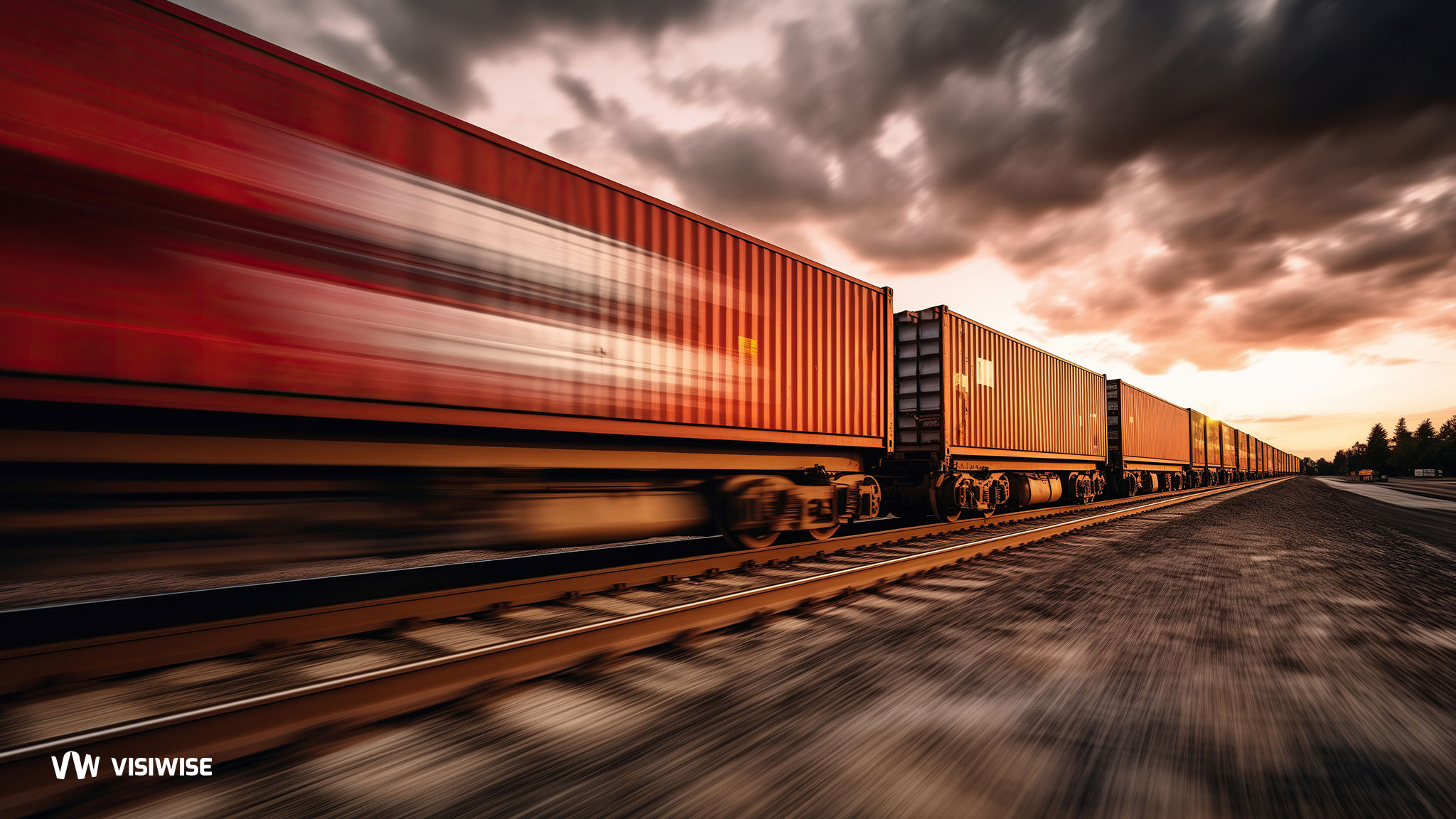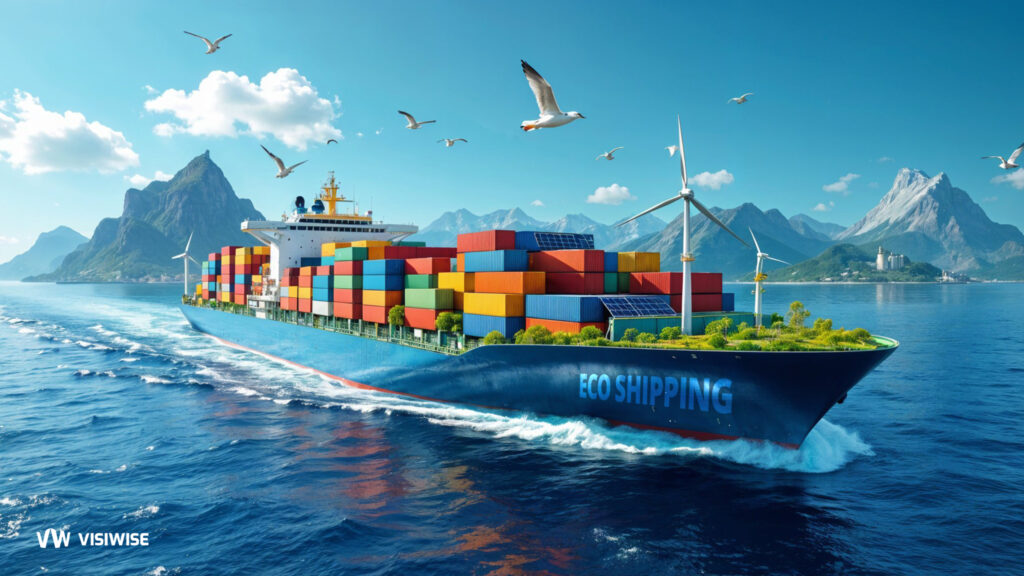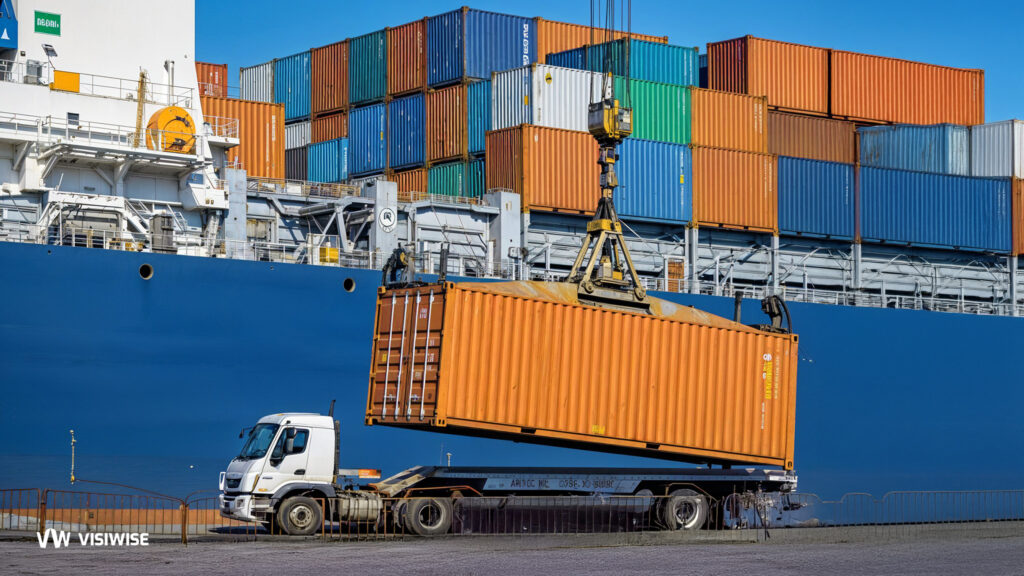Considering using rail freight to ship your cargo? In this guide, you’ll get the complete picture of the rail freight market, along with its advantages and challenges in the industry. What’s more, find out how you can get your hands on SOC containers. Rail freight is fast, reliable, and much more environmentally friendly than ocean or air freight. However, it’s not without its setbacks. Routes are still quite limited, and with an increase in rail traffic in the past few years, making sure you have enough containers at all times can be tricky. Plus, there’s the added stress of repositioning your equipment empty.
Rail freight plays a pivotal role in the global transportation network, serving as a backbone for the movement of goods across vast distances. With its capacity to haul large quantities efficiently and its environmentally friendly attributes compared to other modes of transportation, rail freight has remained an essential component of logistics and supply chain management strategies worldwide. In this guide, we delve into the intricate workings of rail freight, exploring its history, infrastructure, operational procedures, and its significance in the contemporary economy. From the development of rail networks to the technological advancements shaping the industry, this comprehensive overview aims to provide insight into the complexities and advantages of rail freight transportation. Whether you’re a logistics professional, a business owner, or simply curious about the mechanics of moving goods by rail, this guide offers valuable information to deepen your understanding of this essential aspect of modern commerce.
How does rail freight work?
Rail freight operates through the utilization of railways and trains to move cargo across land, offering a versatile transportation solution for various industries. It serves not only as a primary mode of transportation for entire journeys but also as a complementary option, bridging gaps where other modes like ocean or road freight may not be feasible.
The range of goods transported via rail is extensive, encompassing agricultural products, vehicles, chemicals, raw building materials, energy resources like coal and oil, as well as large-scale items such as wind turbines and wood logs. Freight trains are adept at handling diverse types of cargo, whether it be bulk materials, standardized shipping containers, or specialized rail cars and goods wagons tailored to specific freight requirements.
Containerization has revolutionized rail freight, streamlining operations and enhancing efficiency in the transportation of goods. By standardizing the loading process and facilitating seamless intermodal transitions, containerized rail freight has become increasingly prevalent in modern logistics. In the following section, we’ll delve deeper into the intricacies of containerization and its impact on rail freight operations.
Containerization of Rail Freight
Containerization of Rail Freight
Rail freight transportation has undergone significant transformations with the advent of containerization. While bulk cargo remains prevalent, the utilization of standardized containers has surged, revolutionizing efficiency and logistics in rail transport.
Standard Containers
A. Overview
Standard containers, adhering to ISO regulations, come in 20ft and 40ft sizes with consistent dimensions globally.
B. Simplified Transportation
- Historical Challenges: Incompatible gauge sizes previously hindered intermodal transfers.
- Improved Efficiency: Standard containers enable seamless loading and unloading from rail flatcars, enhancing transshipment processes.
Double-Stack Containers
A. Concept
- Double-stack containerization involves stacking two shipping containers atop one another.
B. Well Cars
- Specialized railroad cars, known as well cars, facilitate the transportation of double-stack containers.
C. Increased Capacity
- By utilizing double-stack containers, railroads can carry nearly twice the amount of cargo, maximizing efficiency.
Piggy-Back Service
A. Definition
- Piggy-back service, also termed the rolling highway, combines rail and truck transportation.
B. Addressing Limitations
- Railway Endpoints: Railroads terminate at specific points, necessitating combined transport solutions.
- Inaccessible Locations: Some destinations are unreachable by trucks, prompting the need for alternative methods.
C. Operational Mechanism
- Trucks drive onto railroad flatcars and disembark at the destination endpoint, streamlining cross-modal transportation.
Preference for Shipper-Owned Containers (SOCs)
A. Contrasting Approach
- Unlike ocean freight, rail freight forwarders favor shipper-owned containers (SOCs) over carrier-owned containers (COCs).
B. Rationale
- Flexibility: SOCs offer greater control and flexibility to forwarders in managing container movements.
- Cost Efficiency: Utilizing SOCs can potentially reduce costs associated with container leasing or rental agreements.
containerization has ushered in a new era of efficiency and versatility in rail freight transportation, with standard containers, double-stack configurations, and piggy-back services revolutionizing cargo handling methods. Moreover, the preference for shipper-owned containers underscores the importance of adaptability and cost-consciousness in modern freight logistics.
Why does the rail freight industry use SOC containers?
The rail freight industry predominantly utilizes Shipper-Owned Containers (SOCs) due to several compelling reasons:
Flexibility
SOC containers offer greater flexibility to shippers and logistics providers. Unlike Carrier-Owned Containers (COCs), which are owned and managed by rail freight forwarders, SOCs allow shippers to control the movement of their containers throughout the supply chain. This autonomy enables shippers to optimize their transportation routes, schedules, and overall logistics operations according to their specific needs and preferences.
Cost Efficiency
Utilizing SOCs can potentially lead to cost savings for shippers. While COCs may seem more convenient as they are provided and managed by rail freight forwarders, they often come with additional leasing or rental fees. In contrast, shippers who own their containers can avoid these extra costs and have more control over their transportation expenses.
Consistency
By using their own containers, shippers can ensure consistency in equipment quality and condition. This is particularly important for transporting sensitive or high-value goods where container integrity is crucial. Shippers can maintain their containers to meet their standards, reducing the risk of damage or loss during transit.
Operational Control
Having ownership of containers grants shippers greater control over their supply chain operations. They can track and monitor the movement of their containers in real-time, ensuring timely delivery and minimizing disruptions. This level of operational control enhances overall supply chain visibility and reliability.
Supply Shortage
Rail Carrier-Owned Containers (COCs) may face limitations in supply, especially during periods of heightened demand. The surge in rail traffic following the Covid-19 pandemic has exacerbated this issue, leading to rapid booking of available containers.
During such scenarios, acquiring containers can pose challenges. The inability to secure containers promptly can significantly impede operational efficiency, resulting in wasted time, financial losses, and dissatisfaction among customers.
Consequently, freight forwarders opt for Shipper-Owned Containers (SOCs) to ensure a consistent and readily available container supply for their clients. With SOCs, access to containers is guaranteed, even at short notice, facilitating seamless operations along specific routes.
Minimizing the Necessity for Empty Container Repositioning
Frequently encountering the necessity of relocating empty containers post-rail journey can lead to significant inefficiencies, consuming both time and financial resources. Moreover, the fuel expended in this process adds to environmental concerns.
While Carrier-Owned Containers may seem convenient, they come with their own set of challenges:
Dependency
Relying on COCs means shippers are dependent on rail freight forwarders for container availability and allocation. This dependency can lead to uncertainties in scheduling and may limit the shippers’ ability to respond swiftly to changing market demands or transportation requirements.
Limited Options
Rail freight forwarders may have a finite fleet of COCs, which may not always align with the specific needs or preferences of shippers. This limitation in container options could restrict shippers’ flexibility in terms of container types, sizes, or configurations, potentially impacting the efficiency of their transportation operations.
Cost Considerations
While COCs may offer convenience, they often come with additional costs in the form of leasing or rental fees. These expenses can accumulate over time and may not always be economical, especially for shippers with frequent or large-volume shipments.
while the use of Carrier-Owned Containers may seem convenient initially, the advantages of Shipper-Owned Containers, including flexibility, cost efficiency, consistency, and operational control, make them the preferred choice for many shippers in the rail freight industry.
Sourcing Shipper-Owned Containers (SOCs) for Rail Freight Operations
Securing Shipper-Owned Containers (SOCs) for your rail freight operations is pivotal for ensuring smooth and efficient logistics. Here’s a comprehensive guide on how to source SOCs effectively:
Evaluate Your Requirements:
Assess your cargo volume, types of goods, and transportation routes to determine the quantity and types of containers needed.
Contact Container Owners:
Reach out to container owners directly, including manufacturers, leasing companies, or other businesses with surplus containers.
Explore Online Platforms:
Utilize online marketplaces specialized in container leasing or trading to connect with container owners and negotiate favorable terms.
Collaborate with Forwarders:
Partner with rail freight forwarders who offer SOC leasing options as part of their services. They can provide valuable insights and assistance in sourcing containers tailored to your needs.
Consider Long-Term Leases:
Explore long-term lease agreements with container owners to secure a stable supply of SOCs and potentially negotiate discounted rates.
Optimize Intermodal Solutions:
Implement intermodal solutions that allow for flexible container usage across different modes of transportation, maximizing container utilization and minimizing empty repositioning.
Ensure Compliance:
Verify that sourced containers comply with industry standards and regulations to ensure safety and compatibility with rail freight operations.
The New Silk Road: Connecting Asia to Europe via Freight Rail Network
The Belt and Road initiative, unveiled by President Xi Jinping in 2013, represents a monumental effort to link China with the global community. Central to this initiative is the development of robust rail routes spanning from China to South East Asia, Europe, and Africa.
Since its inception, the initiative has witnessed remarkable progress. China has dispatched over 11,000 freight trains to Europe and back, with a notable surge in 2018, witnessing a 72% increase compared to the previous year, as more than 6,000 trains traversed the route.
Initially conceived to foster closer economic ties between China and Europe, the project has proven immensely successful, particularly amidst the challenges posed by the pandemic. With shipping ports grappling with congestion, the efficient rail network emerged as a reliable alternative for transporting goods.
The Belt and Road Initiative has garnered active participation from 152 countries as of December 2019. China’s commitment to the initiative extends beyond infrastructure development, with substantial investments in various sectors across Asia and Europe, spanning banking, automotive, robotics, renewable energy, and port infrastructure.
Experts project that China’s investment in the Belt and Road Initiative could reach up to 8 trillion dollars by the targeted completion year of 2049. This significant investment underscores China’s long-term vision to enhance connectivity and promote economic cooperation on a global scale.
Estimating Rail Freight Transportation Costs
Rail freight transportation typically entails higher costs compared to ocean freight. However, in regions where harbor access is limited, rail presents an efficient and secure alternative.
To determine rail freight rates, several factors must be considered, including the choice between Carrier-Owned Containers (COCs) and Shipper-Owned Containers (SOCs), geographical location, market dynamics, freight weight and type, as well as the distance of haulage.
For instance, for a rail freight journey from China to Europe, the cost for a 40ft container ranges between US $8000 – $9000. In contrast, shipping a 20ft container via ocean freight from China to Northern Europe can cost as little as US $1,500. Thus, if time is not a critical factor, ocean freight presents a more economical choice.
Despite its higher costs, rail freight offers significant advantages over shipping. Let’s explore some of these benefits below.
Benefits of Rail Freight
Rail freight presents numerous advantages as a mode of transportation for your goods:
Fast and Reliable:
Compared to ocean freight, rail freight offers faster transit times, reducing lead times and enhancing supply chain efficiency. It is not susceptible to congestion, accidents, or roadworks, ensuring more predictable delivery schedules and minimizing delays.
Safe and Efficient:
Rail freight boasts a strong safety record, with accidents being rare occurrences. Additionally, predetermined rail routes reduce the risk associated with unscheduled stops, ensuring the security of goods during transit. Rail transport is not affected by adverse weather conditions or rough seas, further enhancing its reliability and efficiency.
Lower Environmental Impact:
Rail freight stands out as the most environmentally friendly option compared to ocean, air, and road freight. It emits significantly lower levels of emissions such as CO2. This makes rail freight a more sustainable choice, aligning with environmental conservation efforts and reducing carbon footprints.
Challenges in Rail Freight Transport
Despite its advantages, rail freight encounters several challenges:
Higher Cost Compared to Ocean Freight:
Rail freight tends to be more expensive than ocean freight, making it less economical for cost-sensitive shipments. This cost disparity may lead businesses to opt for ocean transport, despite longer transit times.
Safety Concerns for Fragile Goods:
Rail freight may not be suitable for transporting fragile cargo like glass due to the nature of train operations. Sudden halts or acceleration can pose a risk of damage to delicate items, necessitating alternative transportation methods for fragile goods.
Limited Route Availability:
Rail networks, particularly in rural or remote areas, are not as extensive as road networks. This limited infrastructure may require transshipment, adding complexity and potential delays to the transportation process. Loading and unloading cargo onto different modes of transport can increase the risk of damage, loss, and theft, as well as adding to transportation costs.
While rail freight offers benefits such as speed and reliability, it also faces challenges like higher costs, safety concerns for fragile goods, and limited route availability. Businesses must carefully weigh these factors when determining the most suitable transportation option for their specific needs.
Final Thoughts
Rail freight emerges as a viable and efficient mode of transportation, offering numerous advantages such as speed, reliability, and environmental sustainability. Its ability to deliver goods swiftly and securely, particularly over long distances, makes it a preferred choice for businesses seeking to optimize their supply chain operations. Despite facing challenges such as higher costs compared to ocean freight, safety concerns for fragile goods, and limited route availability, rail freight remains a valuable option, especially in regions where other modes of transport are impractical or inaccessible. By carefully considering the specific requirements and constraints of their logistics operations, businesses can harness the benefits of rail freight to streamline their transportation processes and achieve their goals effectively.



